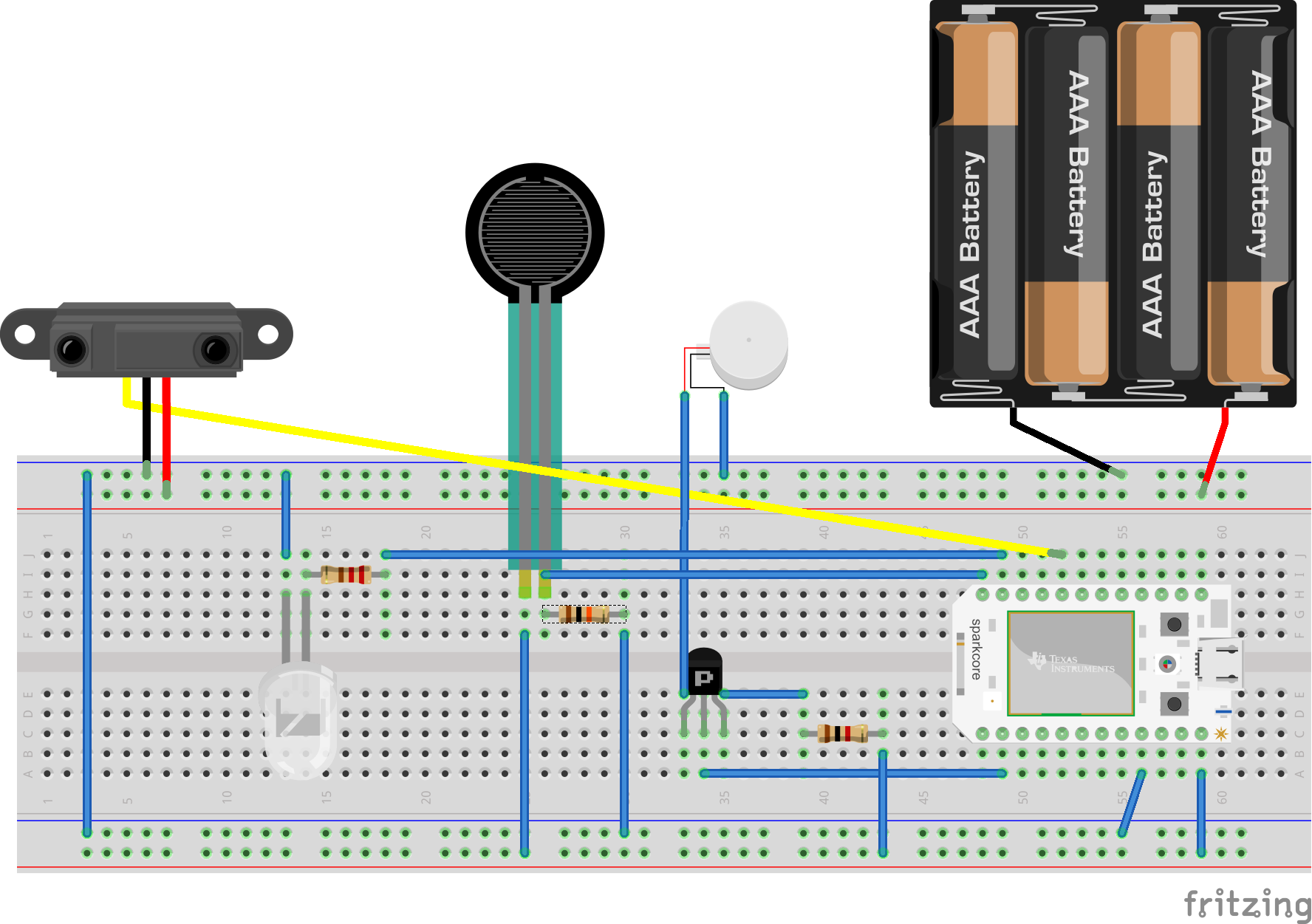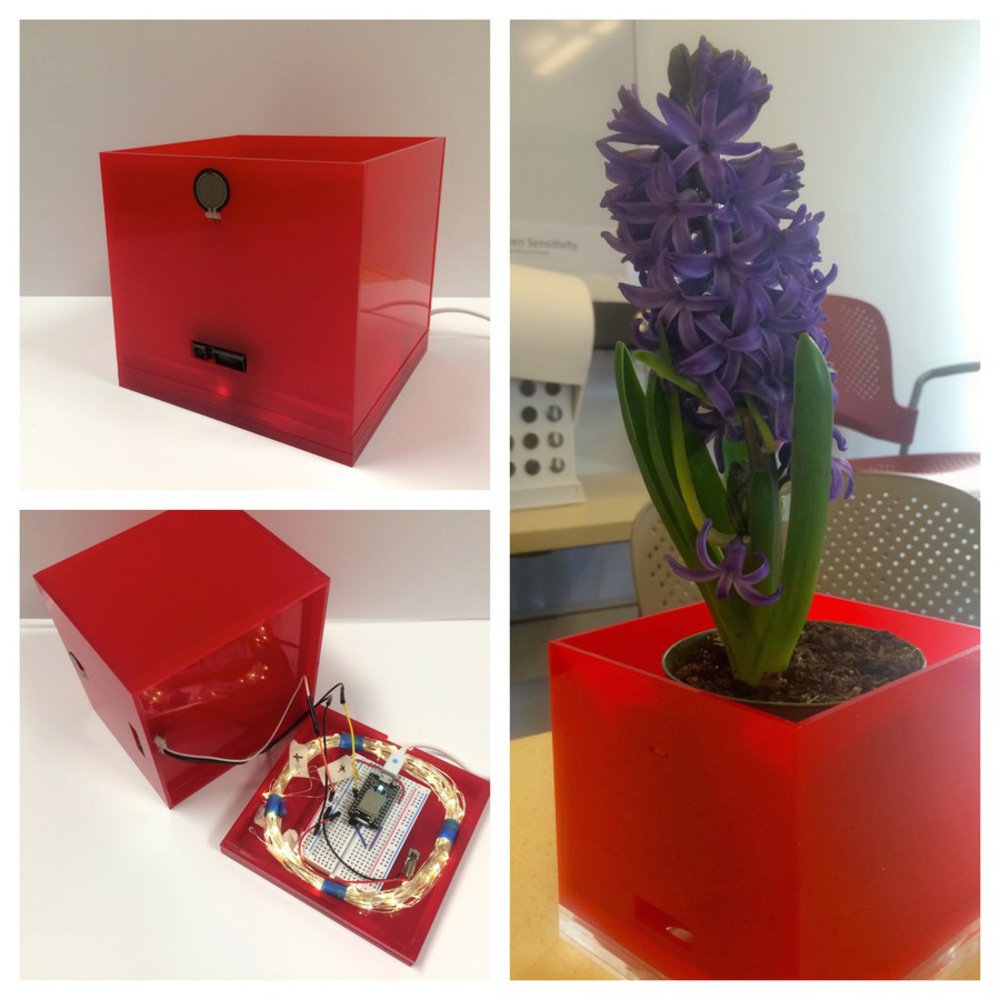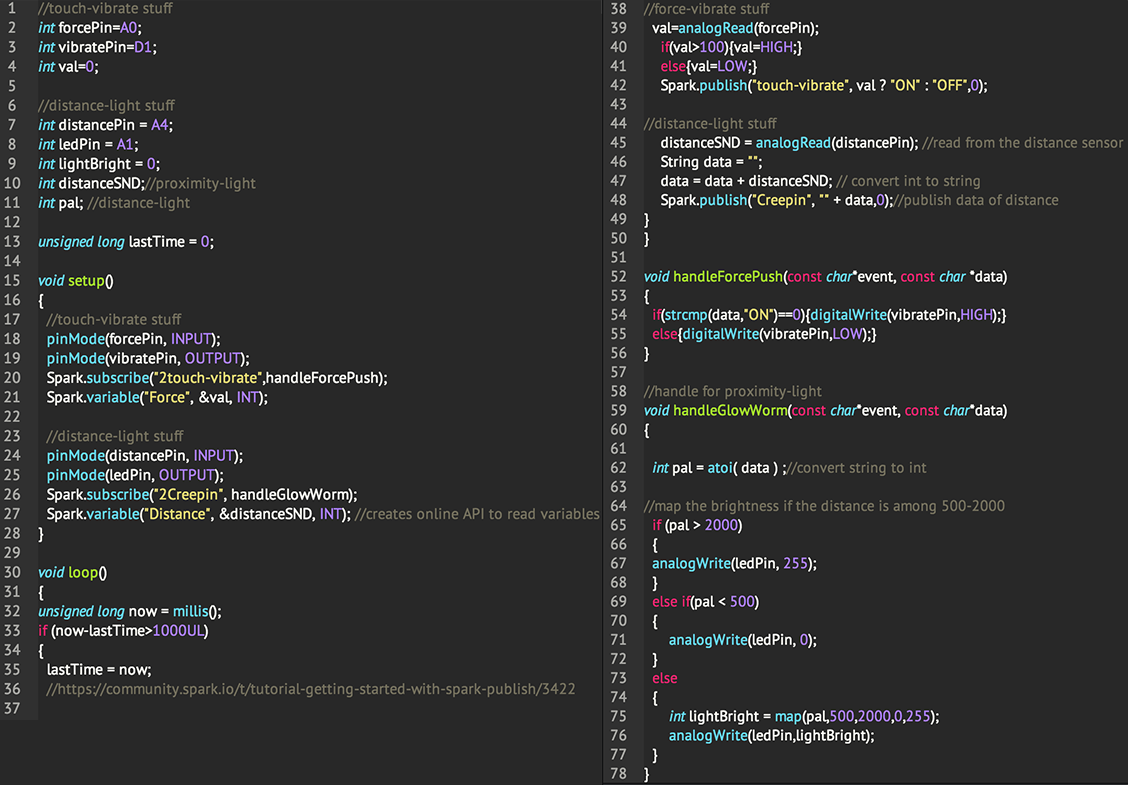Scenario
Partner Pots is a connected flower pot that allows couples at a distance to feel each others presence. The flower pots can be placed anywhere the user pleases. As the user, when you are near the flower pot, your partner's flower pot will glow. The glow will be brighter the closer you are to the pot. If you can see your flower pot glowing, you will know that your partner is near the other connected plant. Additionally,when you are thinking about your partner, you can touch the sensor on the flower pot to cause your partner's flower pot to vibrate. This will allow your partner to know that you are thinking about them and will bring you closer, no matter how far away you are.
How it works
The connected flower pots work using a spark core, sharp infrared proximity sensors, force sensors, LED light strings, vibrating motors, an internet connection, and a little bit of love.
The proximity sensor will sense when something comes into its view, measure how far away it is, and publish that data. The other flower pot will then find that data and use the distance value to determine how bright the LED will shine. In addition to this function, the flower pot will have a force sensor that measures when it is touched. The spark core will then publish this data for the second flower pot to use. The data will then be used in the second flower pot to turn on vibrating motors in the base when the force sensor from the first flower pot has been touched.
Bill of Materials
2 - Spark Cores
2 - Breadboards
2 - Force Sensors
2 - IR Proximity Sensors
2 - LED Light Strands
4 - Vibrating Motors
2 - 5 Volt Power Sources
Clear Acrylic Sheet
Red Acrylic Sheet


